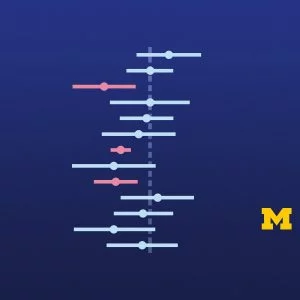
Data analysts, Machine Learning professionals, and data scientists often use tools such as Pandas, Scikit–Learn, and NumPy for data analysis on their personal computer. However, when they want to apply their analyses to larger datasets, these tools fail to scale beyond a single machine, and so the analyst is forced to rewrite their computation.
If you work on big data and you’re using Pandas, you know you can end up waiting up to a whole minute for a simple average of a series. And that’s just for a couple of million rows!
In this course, you’ll learn to scale your data analysis. Firstly, you will execute distributed data science projects right from data ingestion to data manipulation and visualization using Dask. Then, you will explore the Dask framework. After, see how Dask can be used with other common Python tools such as NumPy, Pandas, matplotlib, Scikit–learn, and more.
You’ll be working on large datasets and performing exploratory data analysis to investigate the dataset, then come up with the findings from the dataset. You’ll learn by implementing data analysis principles using different statistical techniques in one go across different systems on the same massive datasets.
Throughout the course, we’ll go over the various techniques, modules, and features that Dask has to offer. Finally, you’ll learn to use its unique offering for machine learning, using the Dask–ML package. You’ll also start using parallel processing in your data tasks on your own system without moving to the distributed environment.
Instructor Details
Courses : 212
Specification: Scalable Data Analysis in Python with Dask
|
12 reviews for Scalable Data Analysis in Python with Dask
Add a review Cancel reply
This site uses Akismet to reduce spam. Learn how your comment data is processed.

| Price | $17.99 |
|---|---|
| Provider | |
| Duration | 3.5 hours |
| Year | 2021 |
| Level | Beginner |
| Language | English |
| Certificate | Yes |
| Quizzes | Yes |

$99.99 $17.99






Brian J –
Course content is great and the author explains everything in detail with appropriate examples. Highly recommend this course to any starting their learning with Dask.
Ying Zhou –
I think the instructor explains concepts well. The Jupyter notebooks he provided are also informative. Overall I like the course for it helps me understand dask.
Rituraj Achuthan –
You can clearly see there was an effort made in making this course. But all this information is readily available for free in the dask documentation page, although with different examples.
Flat Rock Technology EOOD Gen E.I.Totleben 30 32 , floor 2 , Sofia 1606 –
Very poor overview of Dask
Ozgur Ekici –
It was a good introductory course.
Kaneishi –
I believe the course is very informative. I enjoyed the course. If the instructor provides a future class on combination of dask and tensorflow/keras, it would be great too.
Abdelhak Marouane –
It was a good introduction to Dask. This course will give you a good base to start your journey learning more details about Dask.
Choung young jae –
good tutorial. easy to follow. explaining concept of algorithm is very helpful.
Emanuel Baquero –
no se entendieron bien los temas. ni tampoco como implementar en un cluster real
Henri Branken –
Short and sweet, and to the point without wasting time on tangents. I really love this course, and it helped me a great deal with a project at my job.
Henri Branken –
Short and sweet, and to the point without wasting time on tangents. I really love this course, and it helped me a great deal with a project at my job.
Murilo Menezes Mendon a –
As an introductory course, it is worth it. Some features could be better explored, and sometimes it is hard to reproduce what is being shown, but it will definitely save you some time reading the documentation and understanding everything on your own.